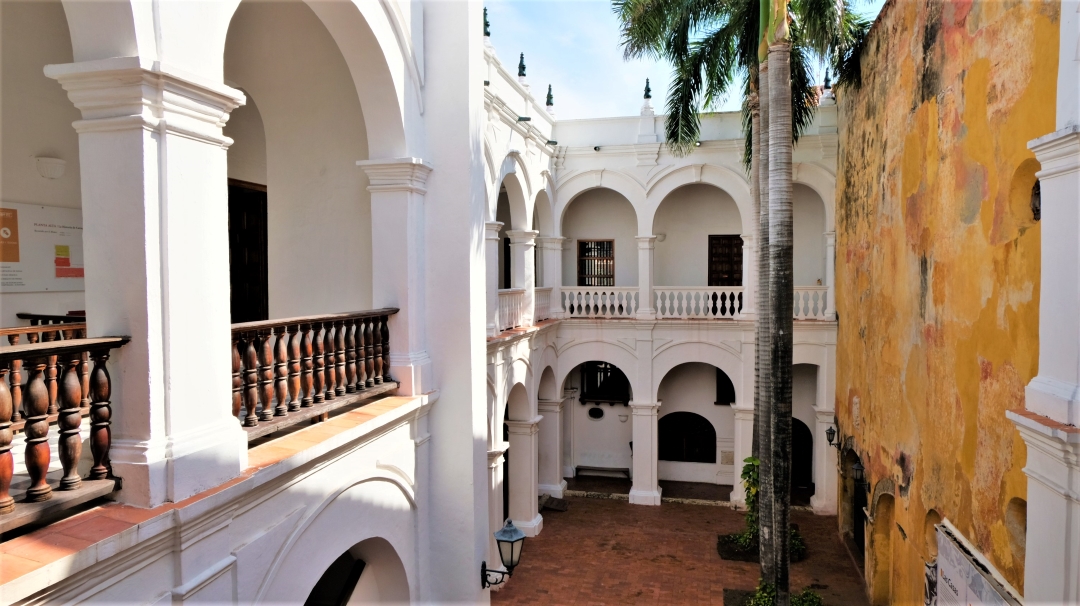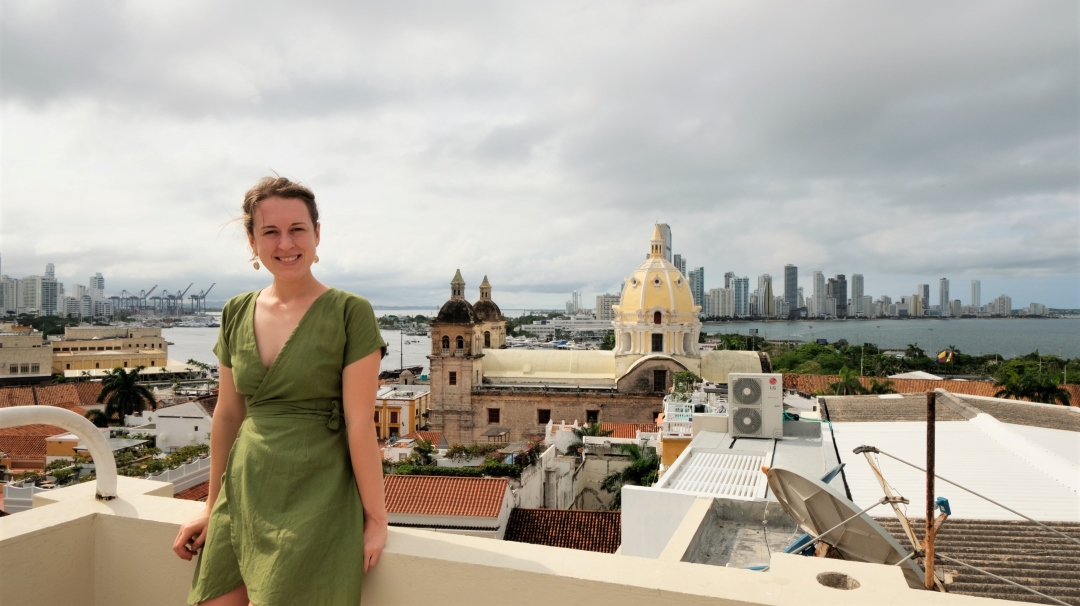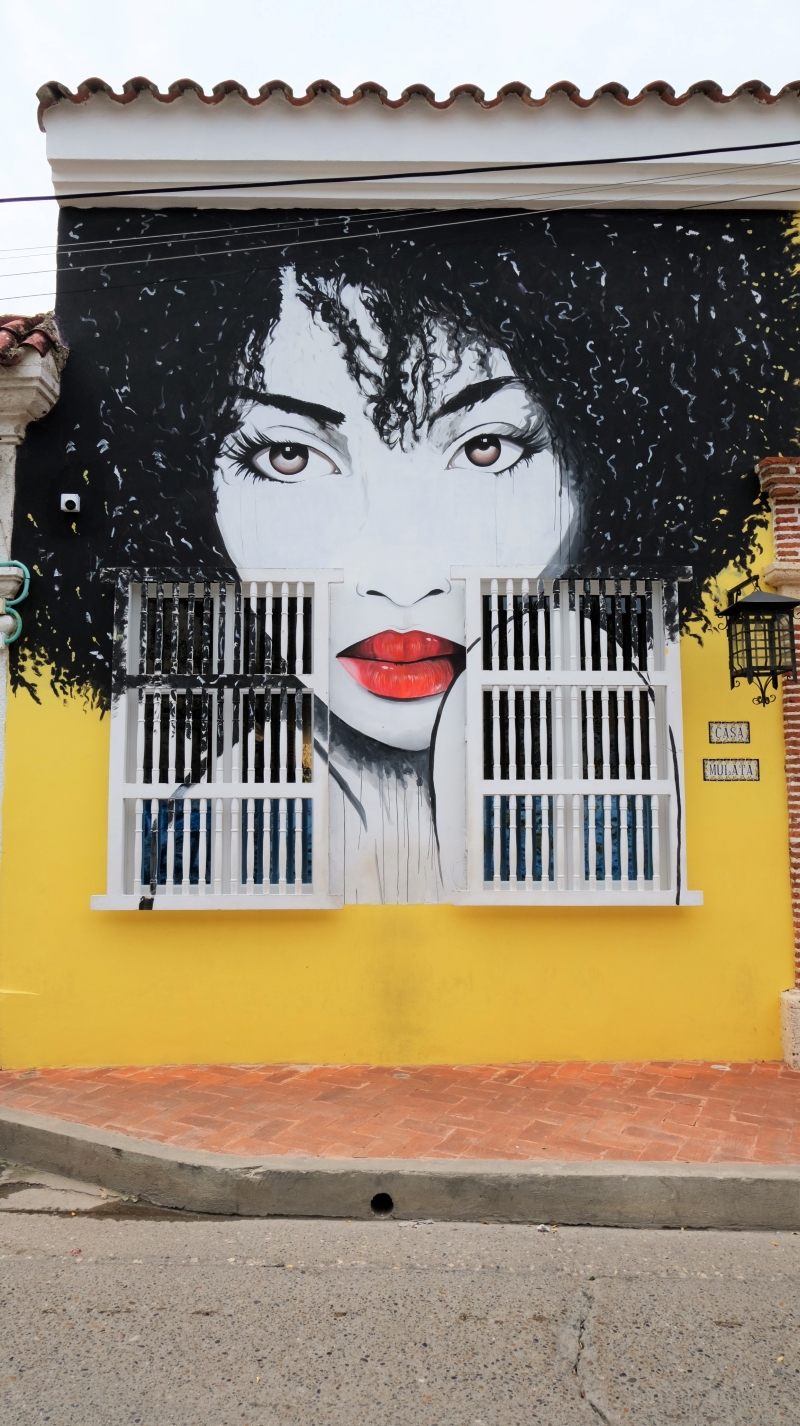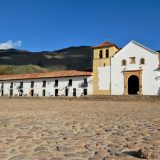10 Things You’ll Love To Do in Cartagena, Colombia

Cartagena is a charming colonial city on Colombia’s Caribbean coast.
The cobblestone streets are naturally lined with people taking Instagram-perfect selfies in front of beautiful churches, plazas or the old city walls. Those who don’t mind getting some dirt under their fingernails can swap the postcard-perfect beauty of the old town for the more worldly appeals of nearby Getsemani.
Cartagena is a city steeped in history. The Spanish built a wall and a fortress to protect Cartagena’s riches from invasion by pirates and corsairs. It was the largest port in the Americas where trade of tobacco, silver, gold and, unfortunately, slaves boomed. The Portuguese brought 125,000 enslaved Africans to Cartagena in the colonial period, where they were bought and sold in the Plaza of the Customs.
African women in colourful dresses, pineapples and fruits adorning their heads offer to pose for (paid) photos on street corners. Beyond the historic walls, skyscrapers jut out in the distance against the clouded skies. Sweet cake shops and cafes line the plazas and cobbled streets. By night, salsa clubs and bars are spilling locals and tourists onto the streets.
The city has transformed itself — it’s both blessed and cursed as a hive of tourism in Colombia now the country has become safe to travel. In the mornings, the streets are still and quiet except for a few travellers in search of an early coffee. By 10AM, the heat is heavy and so are the cruise ships full of tourists in search of Garcia Marquez’s inspiration within the city’s walls.
Like all travellers to Colombia, we fell head over heels for Cartagena’s charm. We holed ourselves up in it’s cafes and pasty shops by day, and it’s tapas bars by night. There’s no way Cartagena couldn’t be on your Colombia travel itinerary.
Best Things to Do in Cartagena, Colombia
Wander Through the Colonial Streets
If we’re honest, our favourite thing to do in Cartagena was simply to wander through the colonial streets. By late morning, Cartagena is hot and crowded. We set our alarm and went out early in the morning before the risk of sunburn and people treading on your feet. This is also the best time to get photos in Cartagena. If you prefer to learn about the history as you go, free walking tours run daily.

Visit the Palace of the Inquisition (Palacio de la Inquisición)
The former headquarters of the Inquisition in Colombia have been converted into a small museum. Several hundred “heretics” of various kind were judged and tortured here. The museum contains only a handful of items and little has been translated to English. The real draw is the building itself, which is a fine example of colonial architecture. Entry is COP $21,000. There are also small displays devoted to Cartagena’s part in the Colombian revolution and to the local indigenous population.

Walk on the Old City Walls
Step up onto the Old City Walls and take a walk along the edge with the Old City on your left, the modern skyscrapers of Bocagrande ahead and the wide open sea to your right. Cafe de Mar is a pleasant place to watch the pelicans fly home at sunset with a drink in hand. As you’d expect, it’s a pricey place and many of the best tables are often reserved, but it’s well worth splashing out for the atmosphere. They serve a good selection of alcoholic drinks, including craft beers. There’s also live music. Note that if you want to pay by card, you’ll have to show ID.

Visit the Gold Museum (Museo de Oro Zenu)
The Gold Museum in Cartagena showcases a number of ancient gold artefacts created by Colombia’s indigenous peoples. The museum was closed for renovation when we visited in late 2019, but there was a temporary free exhibition space open to the public. By all accounts this museum is smaller than the one in Bogata, but if you don’t make it to the capital this would be a good alternative. The museum is expected to open again in 2020.
Explore La Serrezuela, Cartagena’s Modernised Bull Ring
La Serrezuela is Cartagena’s old bull ring. They’ve redesigned the space as a shopping centre, but kept much of the original building’s beautiful woodwork and marble floors. Honestly, I’m not usually one to recommend shopping centres, but the architecture alone makes this place an interesting visit. You can get a drink or a bite to eat from the top floor and enjoy views of the sea on one side or the Castillo de San Felipe on the other.

Visit the Museum of Modern Art (Museo de Arte Moderno)
As with other museums and galleries in Cartagena, the Museum of Modern Art is worth a 30-minute visit. There are three rooms on the first floor and a second floor or a similar size. All of the art is either by Central American or South American artists. We found some of the art toward the strange side, but we’d still keep the museum on your list of things to do in Cartagena. Entry is COP $10,000 per person.

San Felipe Castle (Castillo de San Felipe de Barajas)
It wouldn’t be our top recommendation for things to do in Cartagena — but maybe being from England means we’ve been a bit spoilt with castles. This castle protected Cartagena from pirates and privateers in earlier times. It’s now reasonably well preserved, and it includes several tunnels which were once lined with explosives. Try to avoid the castle in the middle of the day when the heat and the crowds could make it unbearable. The castle is only a twenty-minute walk from the middle of the old town, but it isn’t a pleasant walk given the traffic in the area directly next to the castle. Entry is COP $25,000 per person.
Drop Into Getsemani for a Night Out
Head out of the Walled City and into Cartagena’s hip neighbourhood, lived in by locals and backpackers. Expect streets lined with hostels and street art, single-origin coffee shops and laid-back tiendas-come-bars, salsa clubs that go on until the sun comes up and a warm party vibe. At the beating heart of Getsemani is the Holy Trinity Square, where by night locals pull up red plastic chairs and clink their beers and tourists gather to hear street musicians play. Wafts of steam from carts grilling corn-staples and meat fill the air.
Take a Boat Trip to the Islands
The islands are the classic Cartagena day-trips! We were having so much fun in Cartagena’s old town that we ran out of time to visit the beachy islands of Isla Baru and Isla Rosario. But we heard from friends who travelled in Colombia that they’re a must if you’re after Caribbean waves, white sand beaches and a slice of tranquillity. Tours to the islands can be booked for reasonable prices ahead of time.
Eat Your Heart Out!
Well, what else could you do when surrounded by Colombia’s best Caribbean food? Arepas, coconut rice, plantains, passion fruit pies… the list goes on. Check out of favourite places to eat and drink in Cartagena below.

Read Next: 15 Amazing Things To Do in Medellin
Where to Eat and Drink in Cartagena
Cartagena’s food scene is going to treat you to some delicious brunches and tapas line-ups. We filled our bellies with croissants, shakshukas, passion fruit pies and Spanish omelettes so come with an empty stomach.
By Day:
Epoca Espresso Bar — There are two in Cartagena, we went to the one called La Artilieria. We paid COP $26,000 for a delicious spicy shakshuka and a cup of “bourbon” coffee brewed in a French press. Entertainingly, our coffee came with a brief lecture on correct coffee-making procedure from a mustachioed barista.

La Brioche — Air-conditioned breakfast joint with a focus on freshly baked bread and pastries. We enjoyed our eggs on wholemeal bread with avocado, tomato and cheese and a side of lettuce, though it was more expensive than we were used to paying. We also had two croissants to takeaway which were exquisite.
Mila Postres — Specialising in all things sweet, Mila Postres is a pleasant place to enjoy a passion fruit tart. They also serve lunch (such as simple cheese and tomato sandwiches with plantain chips) as well as coffee and tea. Expect to pay around COP $25,000 for something to eat and drink, or less if you’re just going for the cake (we don’t blame you!)

Cafe Stepping Stone (Getsemani) — Get you’re brunch on with a trip to Cafe Stepping Stone, a cafe with a social good ethos. They’re a social enterprise cafe giving disadvantaged youth the opportunity to work and train in the cafe. Expect a barista served flat white, sourdough with aubergine and other fare you expect in a hipster cafe on a backpacker street.
Crepes & Waffles (La Serrezuela) — Hear me out! Crepes & Waffles is a Colombian restaurant chain that is much, much better than you might expect given the name. You can actually get delicious, healthy food, including vegetarian and vegan options, at very reasonable prices. While sweet options are available, I enjoyed a raw-vegetable crepe with mango chutney, washed down with a generous glass of the local craft beer. There are at least two branches in Cartagena, we visited the one in La Serrezuela inside the glossy converted bull ring.
By Night:
La Tapeira — An excellent hole-in-the-wall serving tapas and sangria. There’s limited space, but it looks as though the couple that run this place like it that way. We missed the rush, but people were queuing for a table when we came and I can understand why. We had a selection of vegetarian tapas for COP $36,000, which included about six pieces with aubergine, courgette, mushrooms, Spanish omelette and a couple of cheeses. A glass of red wine is COP $10,000 and isn’t served ice-cold, which makes a nice change.
Demente (Getsemani) — Demente is a trendy open-air bar in Getsemani. They serve tapas (including vegetarian favourites like patatas bravas and pimientos de padron) as well as pizza from a proper pizza oven. The front room is dark, but it is a great place from which to watch the impromptu street parties that take place in the plaza on the weekend. Alternatively, walk through the bar and sit in the open-air section in the back of the venue; a much better option if you’re in a group.
Where To Stay in Cartagena
Airbnbs in Cartagena
We’re going to let you in on the best Airbnb we’ve ever stayed in. Having travelled through lots of countries and stayed in hundreds of Airbnbs, we’re not saying this lightly. This gem of an Airbnb is in Plaza Bolivar in the walled city. It’s the most perfect spot in Cartagena with all the best things to do on your doorstep but also quiet at night. The apartment features exquisite checkerboard floor tiles, exposed brick walls and traditional high ceilings. The open doors to the balcony mean it’s spacious and airy.
Best of all, this Airbnb comes with a fabulous housekeeper Ada who cooked us delicious Colombia meals. We feasted on arepas and fruits for breakfast, and coconut rice, plantains, salad and beans for lunch. The great thing is your money goes to directly support Ada and her family, and the apartment is locally-owned by the wonderful Chechi. Read more about our favourite Airbnbs and get a discount code here.
Hey, psssst! Get $48 off your first Airbnb stay with my link. Enjoy yourself!
Boutique Hotels in Cartagena
Cartagena has some of the best boutique hotels in Colombia. Hidden in the gorgeous streets of the old town, you can find beautiful boutique hotels like Hotel Quadrifolio and Alfiz Hotel. These are perfect for romantic getaways or getting a little slice of luxury away from the city’s heat. Plush bedspreads sweep across the old oak bed frames. Original brickwork and wooden beams constitute the hotels’ historical decor and tiled floors keep the rooms cool. Rooftop sun terraces and swimming pools are features of both hotels.
Hostels in Cartagena
Cartagena’s hostels are equally gorgeous. The Clock Hostel and Bourbon St Hostal are two of the most popular hostels with fabulous locations in the old town. Both hostels come complete with swimming pools and cocktail bars.
Getting Around Cartagena
A taxi from the airport to the Cartagena’s old town is around COP $14,000. The price is fixed. It’s easy to fly to and from other popular destinations in Colombia such as Bogota and Medellin with flights as low as £25 if you book in advance.
Before coming to Cartagena, we were told that getting a taxi can be something of a hassle as the drivers rarely use a metre and like to drive a hard bargain for each trip. But our one taxi experience aside from the airport run — from the old town to the Berlinas Marbellas Bus Station was cheap and pleasant (COP $8000).
Otherwise, you’ll be able to walk everywhere you want to go in the old town and Getsemani. You’ll only need to catch cabs if you’re staying further out or you’ve got a beach day planned.
Getting From Cartagena to Santa Marta and Tayrona
Many backpackers travel on to Santa Marta and Tayrona National Park after a stay in Cartagena. Here’s what you need to know about this trip: Minibuses run all day from Berlinas Marbellas Bus Station, leaving about every 30 minutes. You don’t need to book ahead. We paid COP $44,000 per ticket to Santa Marta and it took four and a half hours to get there.
A bus from Santa Marta to Tayrona is COP $7000 and takes roughly an hour. Buses go from the public market in Santa Marta. The other option is to get a taxi directly to Tayrona for COP $50,000 (if you haggle well!) If you’re not good at haggling, you might pay COP $120,000 for a taxi. You can easily make it from Cartagena to accommodation outside of Tayrona National Park on the same day.
Read Next: Tayrona National Park — A Hike Through Jungles and Beaches
LIKE IT? PIN IT!
Some of the links in this post are affiliate links, which help to run Charlie on Travel. None of these links will ever cause you to pay an additional amount. I only link to brands I personally use and like.












